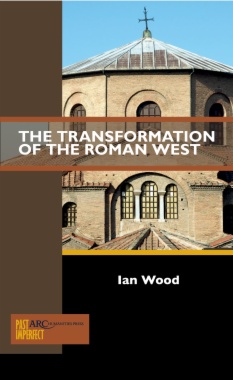Debates about migration and heritage largely discuss how newcomers integrate into the host societies, and how they manage (or not) to embrace local and national heritage as part of their new cultural landscape. But relatively little attention hasbeen paid to how the host society is changing culturally because its new citizens have collective memories constructed upon different geographies/events, and emotional attachments to non-European forms of cultural heritages.
This short book explores how new cultural identities in transformation are challenging the notions and the significance of heritage today in Europe. It asks the questions: How far are contemporary Authorized Heritage Discourses in Europe changing due to migration and globalization? Could heritage sites and museums be a meeting point for socio-cultural dialogue between locals and newcomers? Could heritage become a source of creative platforms for other heritage discourses, better "tuned" with today’s European multicultural profile?
- Front Cover
- Front matter
- Half-title
- Series information
- Title page
- Dedication
- Copyright information
- Table of contents
- Body
- Chapter 1. Cultural Identities, Migration, and Heritage in Contemporary Europe: An Introduction
- Outline of the Chapters
- Bibliography
- Chapter 2. Narratives of Resilient Heritage and the “Capacity to Aspire” during Displacement
- Introduction
- People in Displacement
- Binomial Absence–Presence as a Three-Stage Process
- The Capacity to Aspire and Intangible Cultural Heritage
- Resilient Heritage: Narratives of Hardship, Identity, and Remembering Traditions
- Overcoming Hardship through Heritage
- Remembering Traditions
- Concluding Thoughts
- Bibliography
- Chapter 3. Museum Theatre, Refugee Artists, Contingent Identities, and Heritage
- The “Work” of Critical Heritage Studies and the “Articulation” of Museum Performance
- Contingent Identities and the Value of Not Quite Knowing
- “Our Refugee Communities”
- Bibliography
- Chapter 4. Museums, Activism, and the “Ethics of Care”: Two Museum Exhibitions on the Refugee “Crisis” in Greece in 2016
- Introduction
- A Brief Background
- Museums, Migration, Refugees, and the “Ethics of Care”
- The Campaign-Exhibition: “A Museum without a Home”
- Awareness and Compassion Are Not Enough: Taking Responsibility through “Another Life”
- Conclusions
- Bibliography
- Chapter 5. Heritage Education from the Ground: Historic Schools, Cultural Diversity, and Sense of Belonging in Barcelona
- The Background: Heritage Education in Europe
- The Challenge: Cultural Diversity and Heritage Education
- The Setting: The Historic Schools of Barcelona
- The Strategy: From Discovery to Appropriation of the Past
- Concluding Reflections: From Historical to Lived Heritage
- Bibliography
- Chapter 6. Heritage Processes following Relocation: The Russian Old Believers of Romania
- A Brief History of the Old Believers
- Mobility and Resistant Identities
- Heritage Practices and Processes
- Challenges Encountered in the Old Belief
- Language as ICH
- Migration and Local Responses
- Conclusion
- Bibliography
- Chapter 7. Doing Things/Things Doing: Mobility, Things, Humans, Home, and the Affectivity of Migration
- The Archaeology of a Mobile Life
- The “Past Here”
- The “Present Here”
- The “Future Here”
- Conclusions
- Bibliography
- Chapter 8. Staging Musical Heritage in Europe through Continuity and Change
- Introduction
- The Work Heritage Does
- Music Heritage in an Era of Superdiversity
- Methodological Approach and Data Collection
- Advocating for a World of (Music) Diversity
- Changing Role of Music in a Superdiverse Society
- Staging Intangible Cultural Heritage
- Dealing with Continuity and Change
- Conclusions
- Bibliography
- Back matter

